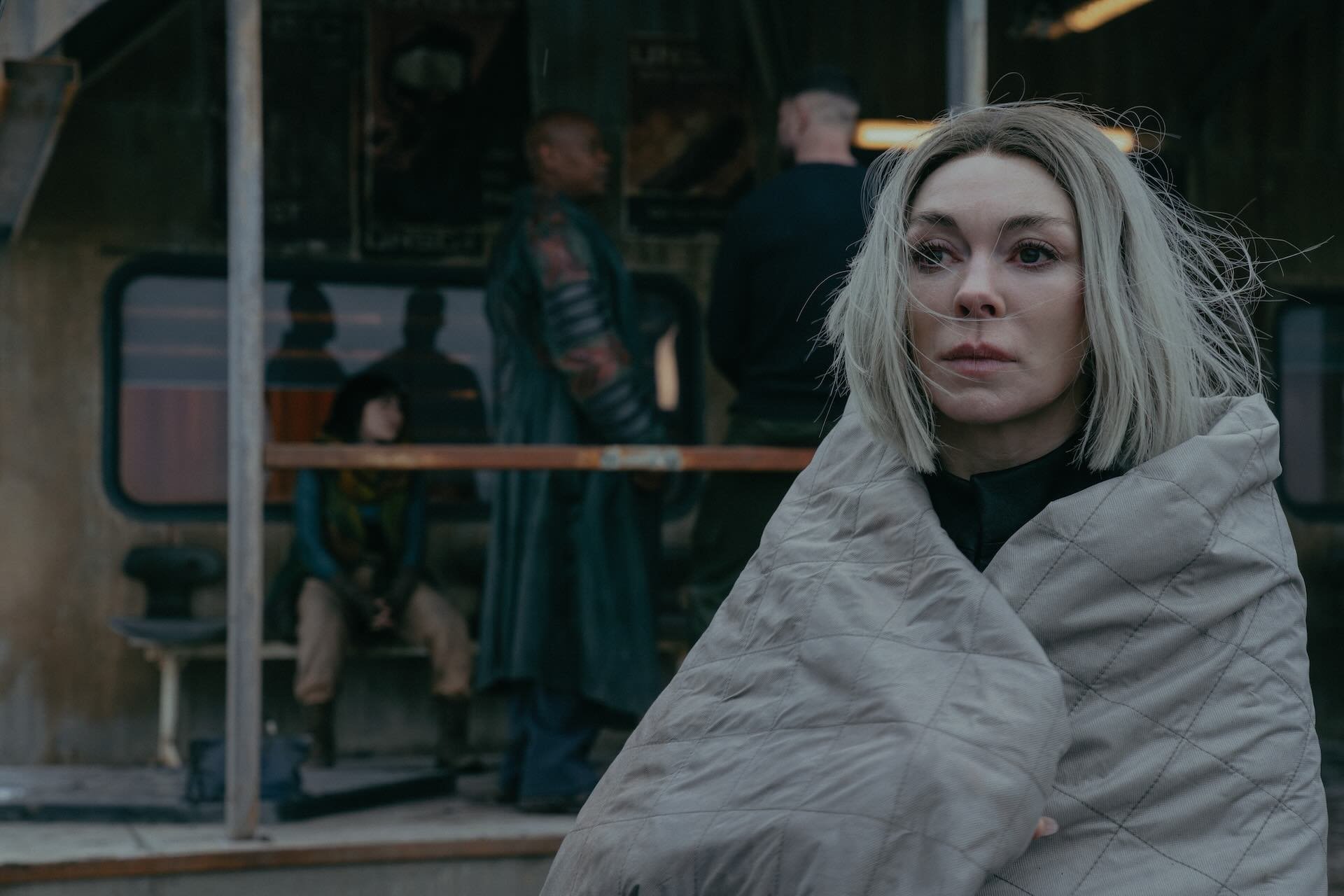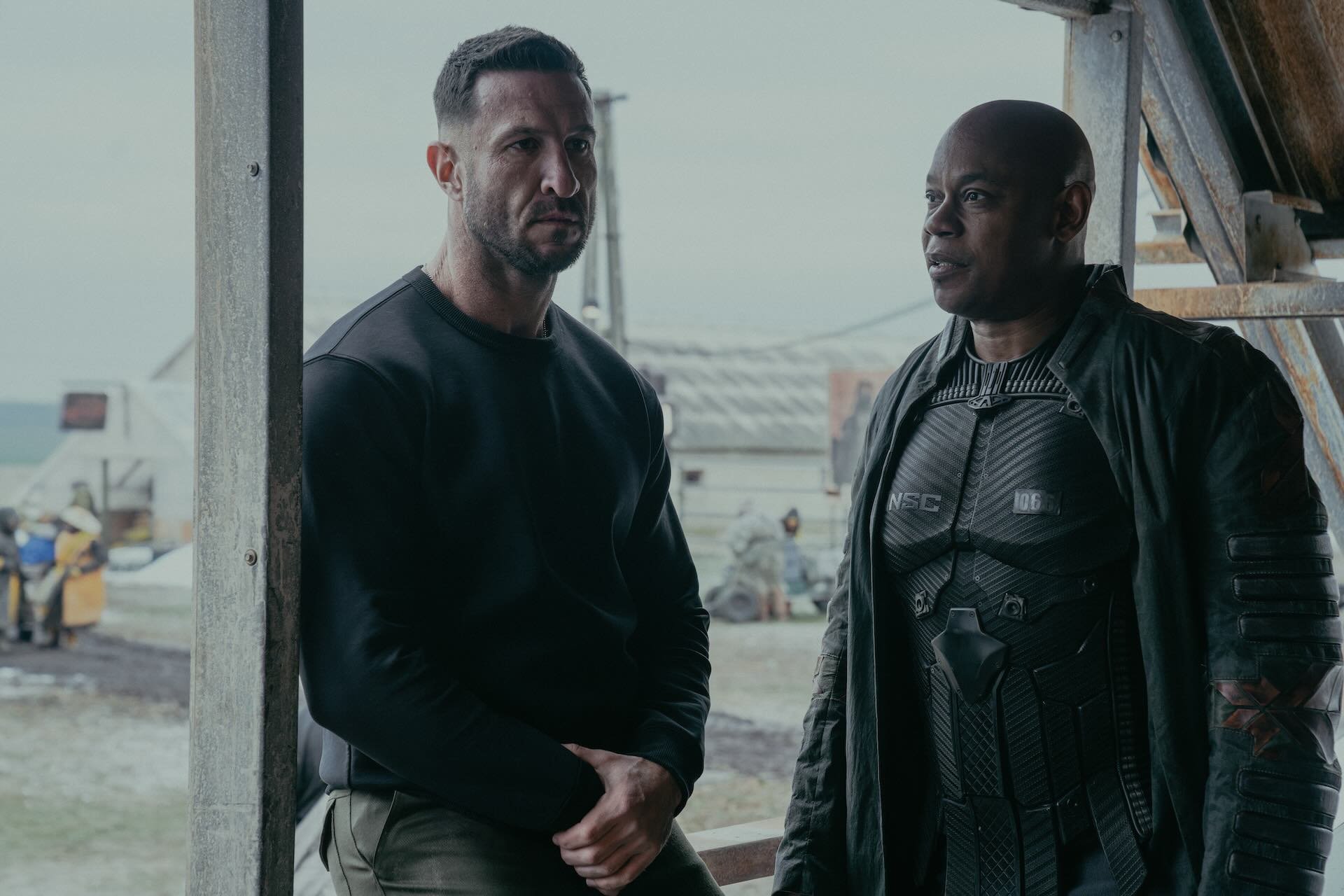Halo Season Two Episode Five “Aleria” Review
Intro
In case you missed my previous reviews of Halo Season Two, you can read my thoughts on the first two episodes, episode three and episode four.
Episode four left viewers in a very unique place. While the episode acts like a season finale, it is instead the show’s midseason marker to designate the turning point in the season that every other episode orbits around. Because of that, certain expectations have to be met not only in this follow-up episode that takes place afterward. To be more specific, a focus on consequences, emotional impact, solving the season’s many mysteries, and striving to become the show Halo fans pictured in their minds when the project was announced over ten years ago.
Story
In episode Five, “Aleria” picks up directly where “Reach” left off and wastes no time exploring the bruises and scars that episode left on everyone involved, figuratively and literally. Stopping to tend to their wounds, our characters find themselves exploring the weight of grief and regret, and the search for a purpose is where the episode shines the brightest. Chief’s interpretation of what this means to him as Silver Team’s leader is one of the most fascinating explorations of the character since Infinite and showcases Pablo Schreiber’s ability to portray both John and Master Chief as separate but interconnected characters. The episode's focus on introspection allows the season to take a breather while not feeling like a side story we’re meant to ignore and provides moments that I’ll be thinking of long after I publish this review.
Speaking of writing, Basil Kreimendahl writes his first episode of the season outside of his staff writer position, marking a noticeable improvement to the overall narrative framing and pacing of the episode/ This shift in credits also marks a return to the first two episode’s dialogue and character interactions. It’s a testament to the show learning from the previous season’s mistakes and willingness to try new things that Kreimendahl’s work not only complements the tone that Tom Hemming’s writing set in “Reach” but improves the themes explored in that episode and creates a seamless continuation of the season’s emotional arc of exploring these character’s psyches and the environments they find themselves in.
Cast
This exploration of psyches is supported further by Schreiber and Bokeem Woodbine, the two standout performances in “Aleria,” elevating the entire episode from a decent one to one of the best in the series.
Schreiber’s portrayal of Master Chief and John as two separate but interconnected identities is one of my favorite choices that has been made regarding Chief’s story arc in Infinite, as it allows aspects of John to surface underneath Chief’s armor. No scene is a better display of how much Schreiber understands the struggle between the two people than when John stares at a UNSC recruitment poster adorned with the Chief’s image with the words “join his fight” and his reaction to all the UNSC propaganda he sees around him. There’s also a scene where Chief has to give a speech that reminded me of Chief’s demeanor in Halo 2 when he was “giving The Covenant back their bomb” or “finishing the fight.” If Schreiber doesn’t get his flowers from other Halo fans for his performance in this episode, let me be the one to say that his portrayal of Chief and John in this episode is up there alongside Steve Downes’.
Likewise, Woodbine’s portrayal of Soren is equally as impressive. I won’t spoil his arc for you here, as I feel like his performance in this episode must be seen to witness how Soren is utilized in the way I thought he should’ve since he was introduced as a fellow Spartan from John’s childhood. So, all I’ll say about Woodbine’s performance here is that he’s given a scene that finally utilizes his strengths as someone who can quickly go from the friendliest person you’ve ever met to your worst nightmare.
Regarding transformations, Fiona O’Shaughnessy’s characterization of Laera, someone who has only been ever described in the cast sheet as “Soren’s wife,” finally gets something to do in this episode that I’m sure will divide viewers. Her performance in “Aleria” even divided me to the point where I made repeated notes about how Laera acted like a completely different person and was extremely out of character. However, the deeper I got into the episode, these concerns faded away. All I can hope is that O’Shaughnessy gets the chance to explore this aspect of Laera in subsequent episodes, as she became one of my favorite characters in the episode.
However, only some performances hit it out of the park for me. Natascha Culzac’s performance as Riz didn’t get enough screen time and didn’t leave me with the impact that I’m sure both Culzac and Kreimendahl intended. The same thing with Yerin Ha’s performance as Kwan. While she receives some much-needed character development from the writing team, Ha’s performance in this episode doesn’t show the same improvement. At this point, I’m starting to think that Ha was not the best performance to be cast in this role. Ha’s reactions to things that should be world-shattering to the character are either nothing at all or so extreme that she screams and cries. I’m not too fond of knocking performances, as I’ve heard how much time and effort goes into a single performance. In this case, however, she has nearly a dozen performances onscreen as this character, so Ha should be comfortable with portraying this character by now. I hope her performance improves, but Ha has not convinced me yet.
Direction
Someone who has convinced me is Otto Bathurst, who returns to the series after directing the first two episodes of season one. Bathurst’s direction is among the best this season, utilizing the chaotic aftermath of “Reach” to disorient the viewer and firmly place the viewer into the desperation and emotional turmoil the characters feel throughout the episode. Clever cinematography tricks by Carl Sundberg, like lens distortion, adds an unsettling edge to the events of “Aleria”. While some of Bathurst’s choices may seem like overkill or visually jarring, his direction consistently emphasizes the emotional heartbeat that defines this episode, creating a visceral viewing experience that leaves a lasting impression long after the credits roll.
Technical Elements
Unfortunately, the CGI and Covenant models also left a lasting impression long after the credits rolled. On the one hand, The Covenant models look slightly improved, getting their scaly texture and armor nearly pixel-perfect. However, this isn’t a constant, as the quality of these models seemingly varies from scene to scene. A great example is two scenes: one at the beginning of the episode and one near the middle. In a close-up shot near the middle of the episode, I can see all the intricate details of the pincers that make up what the Covenant calls a mouth, and it feels very natural to the composition of the scene. If you go back to the beginning of the episode, though, there’s a medium shot of a Covenant soldier (I don’t know the exact name, and I don’t believe the name was in the credits either) that feels so achingly cheap and unnatural to the scene that if I didn’t know any better, looks like an asset from one of the Halo games. It’s not just the Covenant models, by the way. I was also taken aback by the CGI quality on a ship that feels composited into the scene by rotoscoping in footage of the ship’s exterior being moved around by a cherry picker. That’s how bad the CGI quality is here.
While I don't particularly appreciate focusing a portion of my reviews this season on the CGI issue, I feel a sense of responsibility to mention it when it detracts from the viewing experience of the episode.
On the flip side of things, the editing by Tom Hemmings (who was a supervising producer on the first four episodes of season two and wrote “Reach”) in “Aleria” adds significantly to the viewer’s experience. Complementing the episode’s somber tone with a lack of jarring cuts or flashing transitions allows the story room to breathe, emphasizing the weight of the emotional and physical toll that “Reach” left on the characters and world. While the pacing is occasionally slow, this feels like an intentional mirroring of the character’s sense of being lost and adrift. The episode’s focus on emotional depth benefits from this more measured approach, grounding the viewer within the characters’ experiences instead of being pulled away by technical flashiness.
Wrap-up
Overall, “Aleria” marks a promising start to the back half of Halo Season Two, proving the show’s commitment to exploring the consequences of “Reach” and consistently improving the show based on feedback and criticism of the first season. Standout performances from Pablo Schreiber and Bokeem Woodbine elevate the material, while Basil Kreimendahl’s script offers improved pacing and a welcome return to the character-based focus of earlier episodes. Otto Bathurst’s direction complements the reflective tone, creating a visceral and immersive experience. While some technical inconsistencies (particularly with the CGI) remain an issue, the episode’s focus on character depth, emotional impact, and thematic resonance make it one of the season’s strongest installments.
Rating
★★★★
Availability
If you'd like to watch Halo, you can do so with a Paramount+ subscription here.
Until next time!






